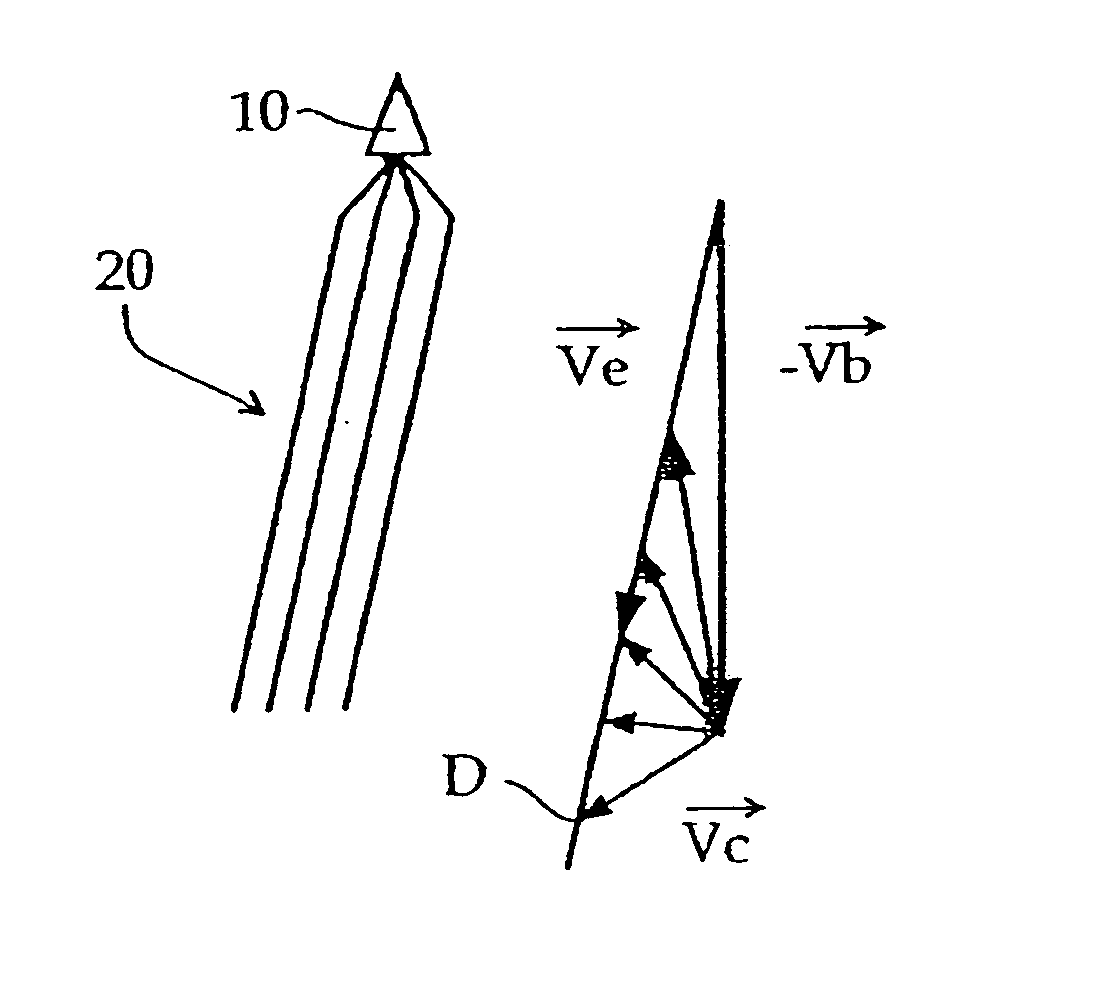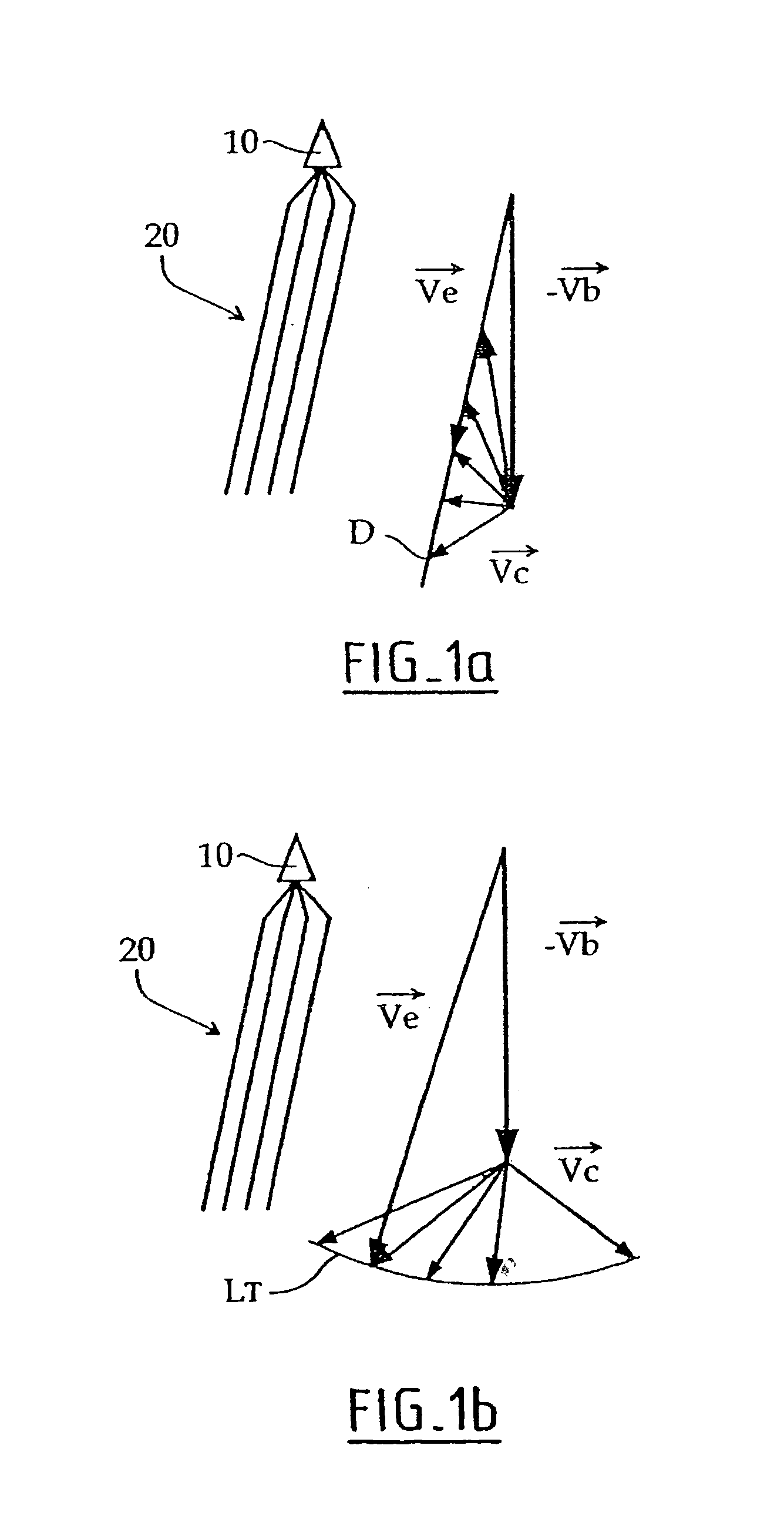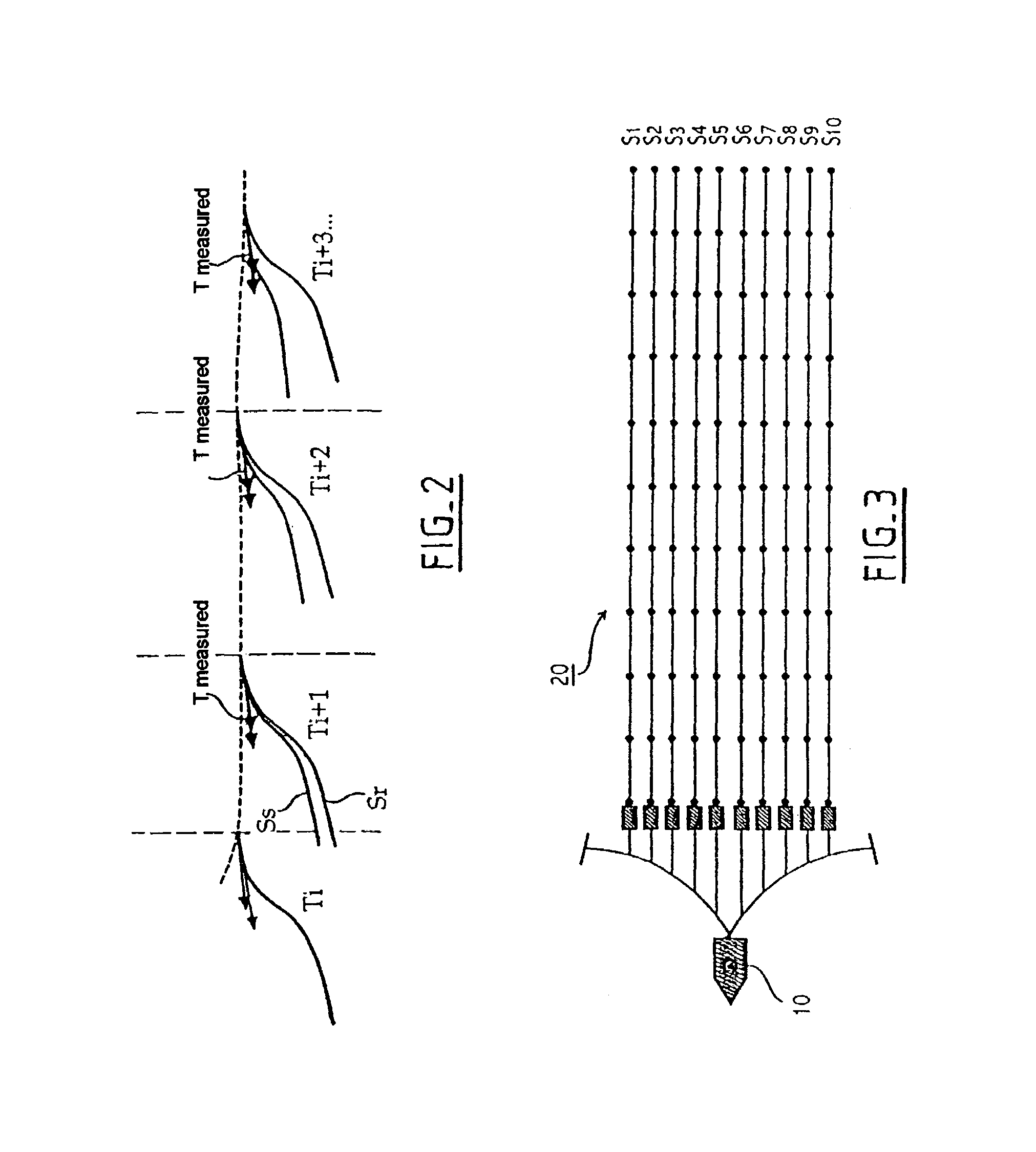Method for determining ocean current and associated device
- Summary
- Abstract
- Description
- Claims
- Application Information
AI Technical Summary
Benefits of technology
Problems solved by technology
Method used
Image
Examples
Embodiment Construction
[0062]FIGS. 1a and 1b very diagrammatically represent a ship 10 towing a set 20 of streamers.
[0063]In the example shown diagrammatically in FIGS. 1a and 1b, the set 20 comprises four streamers; however, this representation is in no way limiting, the invention being implementable with a towed device comprising any number of streamers.
[0064]Represented in FIGS. 1a and 1b alongside the ship and the set of towed streamers are:[0065]the vector {right arrow over (−Vb)}, which is the opposite of the boat's forward vector with respect to the bottom, this forward vector being determinable by measurements of GPS type for example,[0066]as well as a plurality of vectors {right arrow over (Vc)}, each vector {right arrow over (Vc)} being a possible current vector representative of a value of the ocean current with respect to the bottom,[0067]finally, a vector {right arrow over (Ve)}, representing the flow of the water with respect to the ship and to the streamers is also represented; this vector ...
PUM
 Login to View More
Login to View More Abstract
Description
Claims
Application Information
 Login to View More
Login to View More - R&D Engineer
- R&D Manager
- IP Professional
- Industry Leading Data Capabilities
- Powerful AI technology
- Patent DNA Extraction
Browse by: Latest US Patents, China's latest patents, Technical Efficacy Thesaurus, Application Domain, Technology Topic, Popular Technical Reports.
© 2024 PatSnap. All rights reserved.Legal|Privacy policy|Modern Slavery Act Transparency Statement|Sitemap|About US| Contact US: help@patsnap.com










